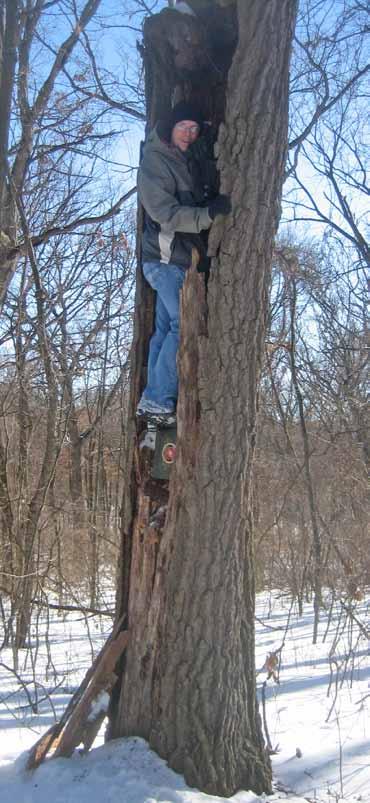
3 minute read
Geocaching family fun
Trea with su te re hu n ch nol t ogy Geocaching can be contagious family fun
Anticipation builds as you get close to finding the cache.
Advertisement
Leslie Foster
Just because it’s cold outside is no excuse to sit around and play video games all day. Geocaching can link kids to the joys of old-fashioned treasure-hunting through the technology they’re already hooked on.
Geocaching uses GPS co-ordinates to find treasure called a “cache.” All you need is a GPS unit and co-ordinates to a hidden cache. If you don’t have a GPS, a smartphone will do, plus a geocaching app download (free ones are available).
A couple of cautions. Using a phone’s GPS will drain the battery fast, visibility is poor in bright light and a phone may not be as accurate as a real GPS. A rugged, waterproof case is a good idea, or at least put the phone in a Ziploc bag in case you drop it. If you end up in love with geocaching you’ll probably want to invest in a dedicated GPS like a Garmin or Magellan.
Caches are hidden by other geocachers. The cache owner uploads its GPS co-ordinates to the Internet. With more than 30,000 caches listed on www.geocaching.com in



Let it snow!
Over 200 km of the best cross-country ski trails are just minutes away! I’ve got my pass. Have you got yours? Buy your pass online at gatineaupark.gc.ca
S E A S O N S K I P A S S Reduced
UNTIL December 15 RATES S
E A S O N S K I P A S S
or call 819-827-2020 | 613-239-5090 (TTY)
Photo by cuu508 When searching for a cache, a little help never hurts.
the Ottawa-Gatineau region, you’ll find lots within a few kilometres of home. You register to access the co-ordinates, and using the site is free, so it’s inexpensive, family entertainment.
Once you find the cache, it will probably be a container with a log book. You log the find. Sometimes the container will have items to trade. Take and item and replace it with one of equal or greater value. You never know what you will find, and the mys
Playi ng safe


tery adds to the excitement.
Winter tips Check the “Last Found” date of a cache before you head out. Unless you’re up for big digging, stay away from caches that haven’t been found for several weeks – they’re probably buried in snow. You’ll have better luck if someone has logged a recent find.
Check the attributes to see if the cache is
Checking cache description for difficulty level.

listed as winter-friendly. Many such caches will be flagged with a snowflake. Since you can snowshoe, ski, skate or toboggan to a geocache, tracks might lead you right to it.
Take a picture. Caches can freeze into their hiding place, be frozen shut or damaged by storms – so you might not be able to sign in. Many cache owners accept a picture instead.
Head outside to join the hunt. It’s fun, it’s out there, it’s a winter treasure hunt!
Don’t go out alone, and let someone know where you’re going and when you expect to return. It gets dark early, so allow lots of time. Dress in layers. Weather can change unexpectedly.
Bring extra batteries for your GPS. They drain faster in the cold. When it’s not in use, keep your phone or GPS inside your coat for warmth.
Wear warm, waterproof boots and carry water. You can get dehydrated, even in winter.
Bring a pencil to log your find. Pens freeze.
Be cautious on hills, around ledges and near water. Stay off ice unless you know it is at least seven or eight centimetres thick, enough to support your weight. When in doubt, take a different route.
Bring a few emergency supplies in case you get injured or lost: dry socks, matches or lighter, a flashlight, map and compass, snacks, a thermal blanket.








